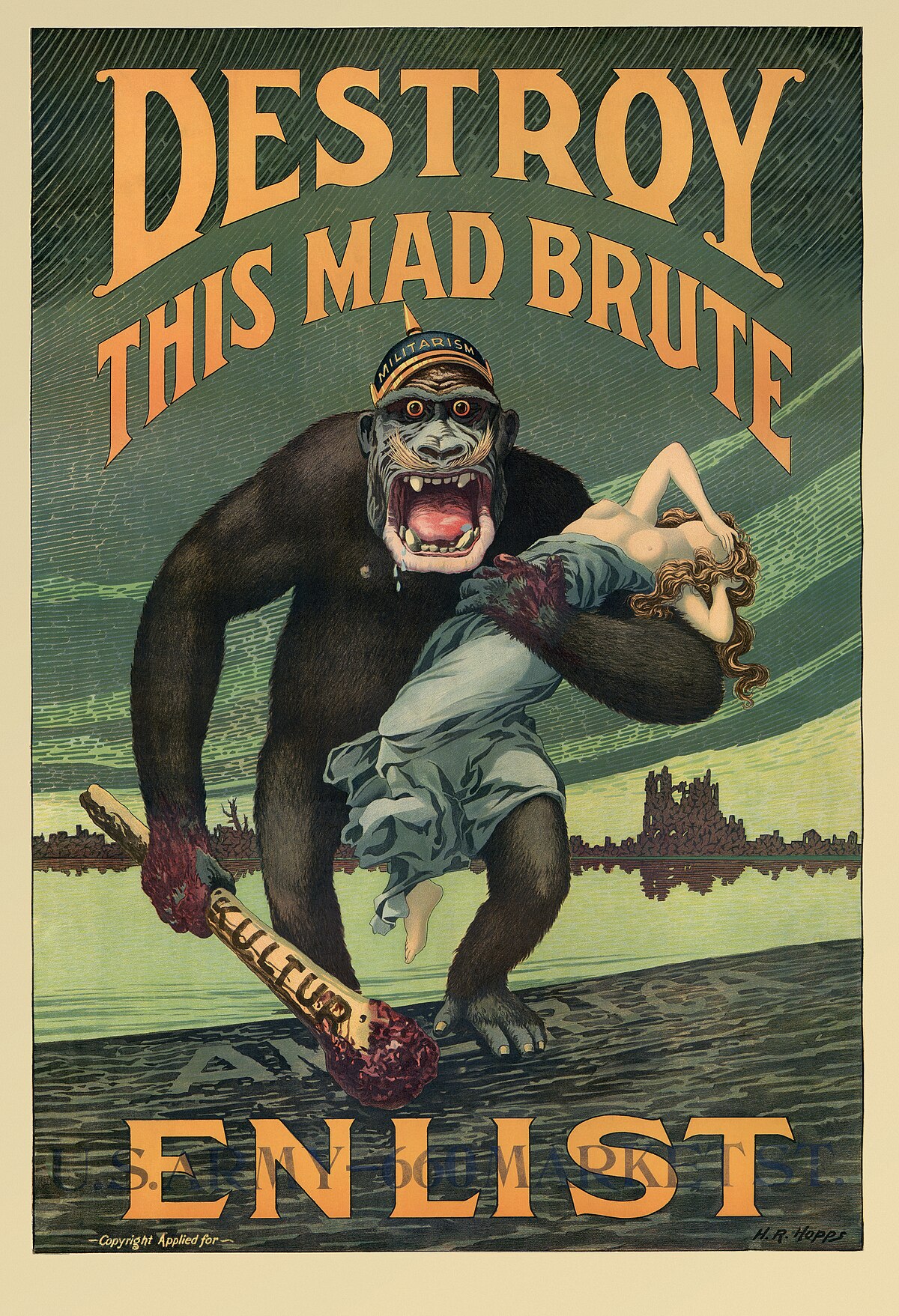Propaganda has been used in wars for centuries to garner support for countries. However, after the Gilded Age and the rise in mass media, World War I was the first war where propaganda played a significant role in informing the public of war efforts and the happenings on battlefields. The early 20th century was also the first time nations used propaganda to specifically target the minds of American citizens and alter their views. There were multiple different types of propaganda used during this time.
The first kind of propaganda used in America was known as atrocity propaganda, which focused on magnifying the violent acts committed by Germany and other countries to mobilize hatred towards the Central Powers. For example, graphic images and personal accounts worked together to depict Germany as a terrible nation that committed numerous crimes against humanity. The underlying purpose of this was so the government could justify to the people their involvement in the war.

The second type of propaganda was used to play into people’s nationalistic and patriotic sentiments. Some iconic figures used in this type of propaganda included Uncle Sam, a well-known symbol for America, and St. George, a symbol that appealed to religious Americans. The government used this propaganda to inspire a sense of pride for America in young American men so they would enlist and help the war effort.

Lastly, women were also used in propaganda during this time period to inspire more American men to fight. While propaganda in countries like the Ottoman empire encouraged women to enter the workforce as many men were off at war, America mainly portrayed women in their traditional gender roles as a way to encourage men. Posters often depicted wives supporting men in their fight during the war, showing that these women at home wished for their husbands to defend the country’s honor.
This spread of propaganda during World War I was only possible due to the expansion in mass media. Due to organizations like the Committee on Public Information, the United States government was able to distribute propaganda through books, pamphlets, and advertisements in newspapers. While there is still the question of whether influencing the public in this way was morally and ethically correct, there is no doubt that propaganda had a huge impact on the minds and opinions of the American population during World War I.
I really liked how you sectioned your blog post to include information about each type of propaganda, as it made it easy to process this information. I think another important aspect of this propaganda was the effect that it had on German Americans. In the years approaching World War One there was an estimated 8 million Germans in the United States. As propaganda was spread throughout America so did anti-german sentiment. It got so bad that Germans began to distance themselves from their culture, stating that they were barely german"several generations removed from the old country". This shows how powerful propaganda can be as it causes people to distance themselves from their culture.
ReplyDeletehttps://www.npr.org/2017/04/07/523044253/during-world-war-i-u-s-government-propaganda-erased-german-culture
I enjoyed this blog post a lot as it detailed a topic that is not often examined in detail. The atrocity propaganda interested me and I wanted to do some more research on to the specifics of what this propaganda depicted. This atrocity propaganda was used during World War 1 mainly to show extreme portrayals of violence committed by Germany and Austria-Hungary. The soldiers were depicted as savages. The Serbian Prime Minister even paid a forensic scientists to investigate war crimes. After this, a report was created to show in great detail violence against civilians by Austro-Hungary forces. This report wrote about violence against civilians and had graphic images and testimonies. Clearly, the atrocity propaganda was used to malign other countries and countries used great effort to do so.
ReplyDeleteSource:
https://en.wikipedia.org/wiki/Propaganda_in_World_War_I
This is a super interesting blog post! I like how you outlined the different types of propaganda used in WW1 and gave examples of each. Your post really showed me how impactful propaganda was in the war. After some more research, I found that another aspect of this topic was food propaganda. Many posters encouraged civilians to conserve their food so that soldiers in the war could get higher rations. Unlike the recruitment propaganda mentioned in your post, food propaganda made civilians feel like they could contribute to the war effort, even if they could not actually fight.
ReplyDeletehttps://thetakeout.com/how-wwi-food-propaganda-forever-changed-the-way-america-1798259481
I thought this was super interesting and a really important part of the war to touch on! Propaganda was a major fuel of the war and greatly shaped public opinion of the time. Propaganda helped to fuel the pro war movement which I believe is what made it so important. I really liked that you broke up the propaganda into sections in order to provide more detail on each example. I think this was very important since the genre of propaganda was so wide and had very different effects depending on the type. The detail you went into about the effects of the propaganda really added to your post. Lastly I also thought it was very interesting and important that you included the use of women in propaganda and how that inspired women to join the workforce.
ReplyDelete